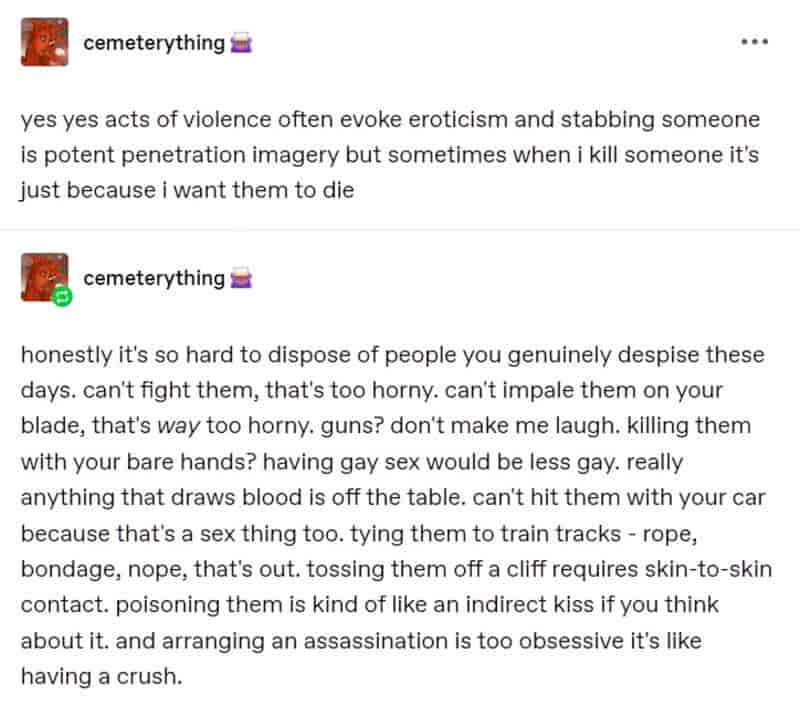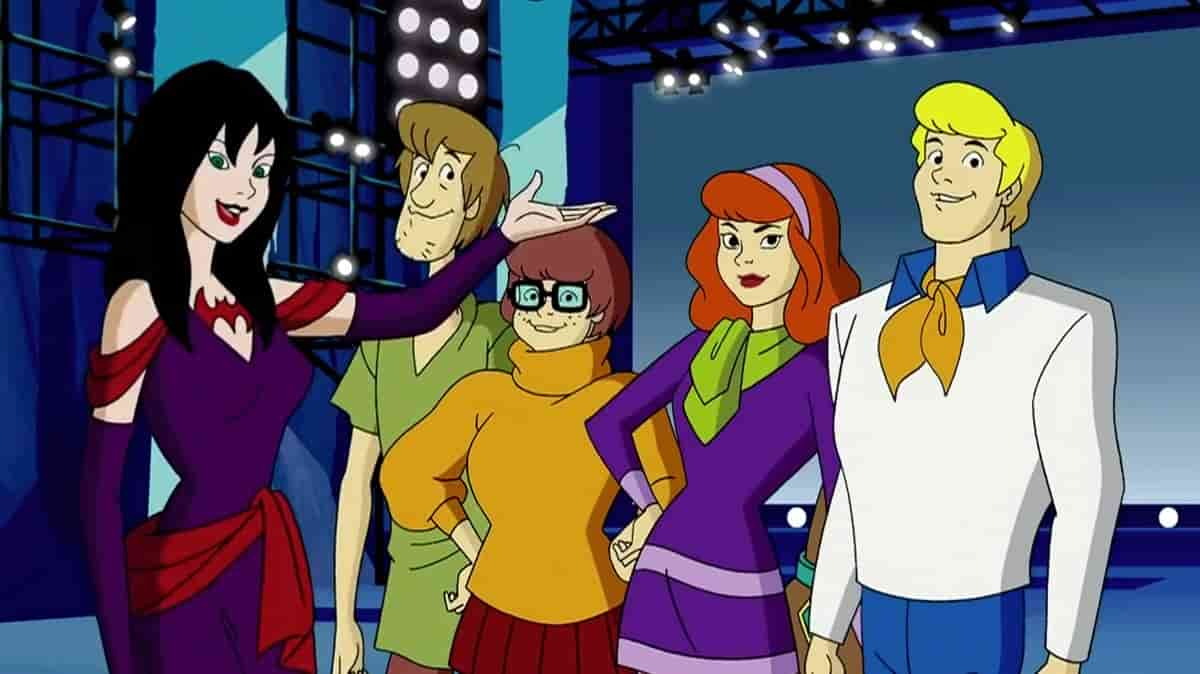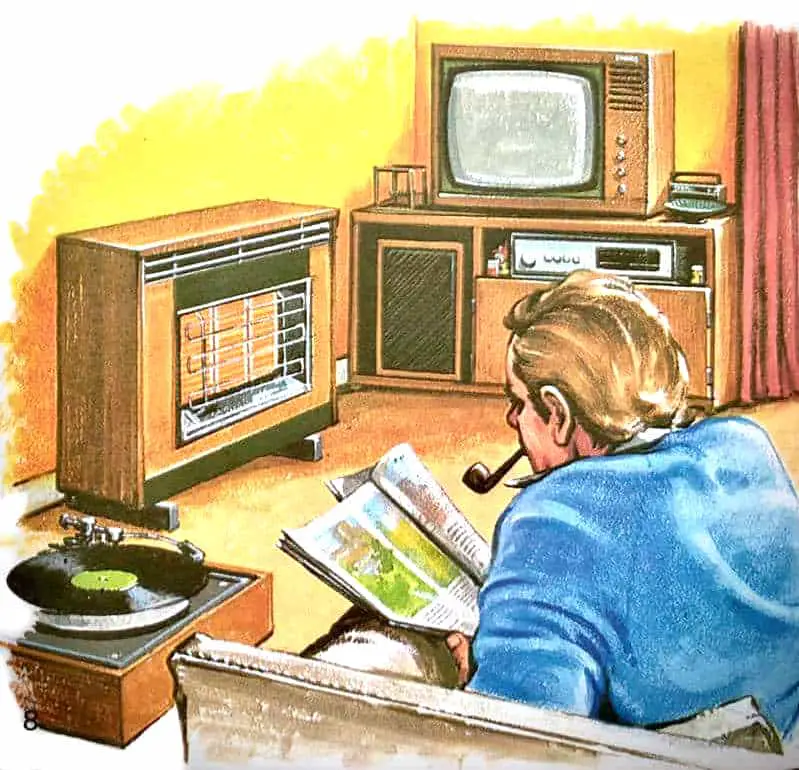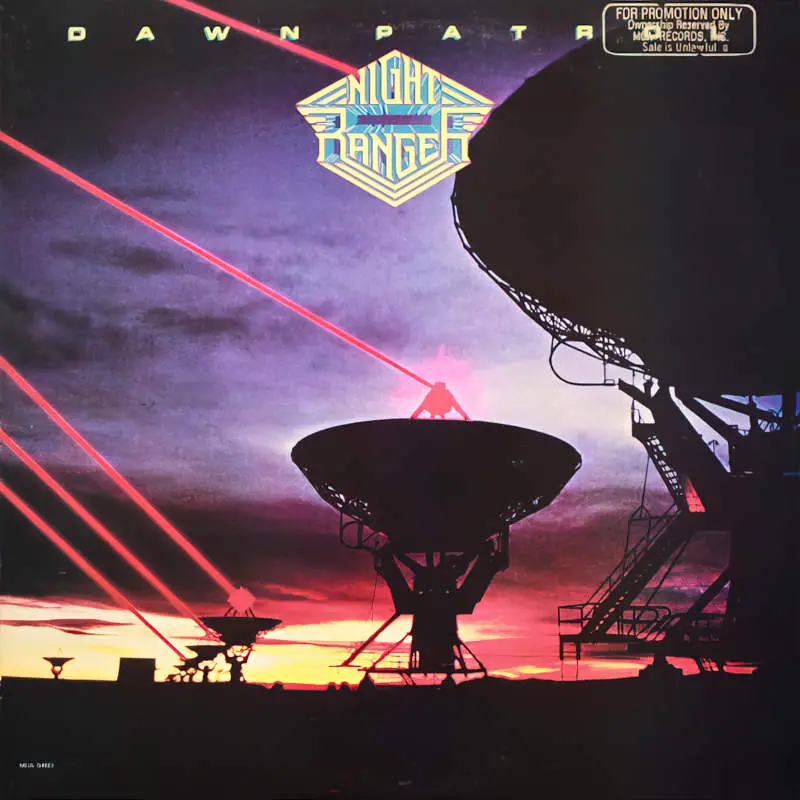One of my favourite short stories of all time is from the Skeleton Crew collection: “The Raft“. Still gives me chills just to think about it.
Someone called Fizz, on a discussion board
Find “The Raft” in King’s Skeleton Crew collection (1985). However it was first published in November 1982.
Content note for sex and violence.

DISCUSSION QUESTIONS FOR “THE RAFT”
- Aside the fact that we’re reading a Stephen King story, how does King set up the ominous atmosphere in which we know something bad is going to happen? (Speak to setting, character and established tropes.)
- The cast of four characters, two young men, two young women, was already a tried-and-tested formula by the early 1980s. In what famous cartoon did we see this combo? To what extent do these characters map onto those ones? In which more recent stories have we seen the same quartet? And what’s the oldest story you can think of with a similar quartet of young people?
- Which parts of this story (if any) remind you that it is set in the early 1980s?
- Think of where you live now or where you grew up. Are there places which have been closed off to the public for health and safety reasons? Does everyone obey the rules?
- Do you find any of these characters likeable? What about ‘relatable’?
- You probably predict that the character will get picked off. Did you guess correctly which one would be picked off first?
- Do you feel like these characters are punished by the thing in the water? If so, what are they punished for?
- This story combines sex and violence. How do you feel about this? Is it justified or exploitative? a little of both? somewhere in between?
- How does Stephen King make use of italics? (What are the parts in italics?)
- At the end of the story, the lone survivor asks, “Do you love?” What do you make of this?
Bonus question: Stephen King has named Shirley Jackson as one of his favourite authors. Can you see specific Shirley Jackson influence here?
WHAT HAPPENS IN “THE RAFT”
If you’ve seen The Shallows (2016) starring Blake Lively, King gives us a similar plot here. In The Shallows, Nancy is surfing alone on a secluded beach when she is attacked by a great white shark and stranded just a short distance from shore. Though she is only 200 yards from her survival, she can’t get back because of a killer in the water.
In Stephen King’s earlier short story, we’ve got four drunk young adults — two boys, two girls — who manage to get themselves stuck on a raft in the middle of a very cold lake. No one knows they’re there because they’ve not supposed to be at Cascade Lake anyway.
And it’s not a shark, it’s an amorphous black thing which might be mistaken for an oil slick due to the swirling colours, or like a mole, or like Naugahyde (a trademarked name for pleather). It also looks the shape of half a pizza, which accurately describes shapes in the water when you’re observing them drunk at night.
These young people don’t actually like each other. They are still working out who will be hooking up with who. It emerges that the girls don’t like each other. The boys neither each other nor the girls. Everyone in this group is a sexual rival. The last two alive are not sexually drawn to each other — they engage in a dehumanising act of desperation.
Ultimately the young adults are punished for their failure to look out for their fellow human beings. The thing in the water picks them off one-by-one, starting with Rachel, then Deke. In desperation, Randy has (dubiously consensual) sex with LaVerne, whose hair hangs over the side of the raft. This leads to her death.
As the story ends, Randy is alone and shivering, knowing that no one will come to save him. He descends into madness, his thoughts become stream-of-consciousness, full of imagery from his life interspersed with his current fear of death. The Thing in the water is both black and colourful and symbolises Randy’s various fantasies, including his fantasy of a perfect summer.
SETTING OF “THE RAFT”
Stephen King establishes the setting in the opening paragraph:
- A place called Cascade Lake, a name which suggests a ‘cascade’ of compounding problems… Beware!
- This lake is 40 miles from (Stephen King’s fictional) Horlicks University in (the real world) Pittsburgh. (We deduce the characters attend this university.) Whereas I associate the name Horlicks with a malty, milky bedtime beverage, American readers have not been on the receiving end of GlaxoSmithKlein’s marketing campaign, so may not see the same irony. (Elsewhere in the English speaking world, it’s like Stephen King named one of his horror settings Hersheys Kiss or Little Debbie.) King’s Horlicks University also appears in “The Crate” (1979), Christine (1983) and From a Buick 8 (2002).
- October (Halloween season!)
- 6pm, getting dark
“The Raft” was first published in 1982, and is set around that time. I recognise “Last one in’s a rotten egg!” a schoolyard taunt which I haven’t heard since last century. (This saying also points out how childlike these characters are.)
We gradually learn that Cascade Lake is closed to the public. Naturally, whenever any wide, open, natural space is closed off to the public for safety reasons, those places become more attractive to certain people — mostly young people with a car. In my part of the world, the notoriously dangerous spot is The Gibraltar Falls waterfall.

Having grown up in Aotearoa New Zealand, I can name many natural spots which are regularly closed to the public on a periodic basis due to weather conditions, slips, flood risk or whatever. As a young adult I walked the Heaphy Track, which I see has only just opened again after storms destroyed three bridges. The rebuild took 18 months.
But why has Stephen King’s Cascade Lake been closed since Labor Day? WHAT HORROR HAPPENED ON LABOR DAY?! Let’s find out.
CAST OF CHARACTERS
We’ve got the good ole Hanna-Barbera Scooby-Doo quartet going on — the double date which isn’t quite that, probably because one of the young women isn’t interested in the very available young man. We see it in Cabin In The Woods (2011, a horror spoof), and we also see it in Bram Stoker’s Dracula (Jonathan, Van Helsing, Mina and Lucy).

DEKE
The first thing we learn about Deke: his name.
Deke originated as a shortened form of decoy. American writer Ernest Hemingway* used deke as a noun referring to hunting decoys in a number of his works, including his 1950 novel Across the River and into the Trees (“I offered to put the dekes out with him”).
Merriam-Webster
(*In this short story, Stephen King uses the word ‘well-lighted’, which puts me in mind of Hemingway’s “A Clean, Well-lighted Place”. Is King writing an homage to Hemingway? A sort of inverted version of that famous story, in which the young adults should have just gone to a bar? Or stayed home?)

Deke, possibly a decoy protagonist trope, owns the Camaro which gets the foursome to the deserted lake. A good-looking jock type.
We learn immediately Deke is drunk for much of the time. So right away, I expect this guy will get picked off, but let’s see. Without hesitation they get to the beach and he’s pulling off his shirt, which reminds me of the young woman at the beginning of Jaws (of the same era), sacrificed to the ocean for the crime of overt and confident sexuality.
This trope lasted a while. In 1990s anti-drinking advertisements from my own youth, aimed at teenagers, the ‘girl’ in the scenario was sexually exploited (“Don’t drink or you’ll get r*ped) whereas ‘boys’ ended up in a car wreck (“Don’t drink or you’ll get killed”). So yeah, I’ll be surprised if this guy makes it.
(Today’s New Zealand road safety ads are far less explicit.)
Deke is a geology student, but mainly a footballer who gets $200/month in cash — “an allotment”. ($200 in 1982 is equivalent in purchasing power to about $637.90 in 2023, but of course it depends what you have to buy with it — housing has gone through the roof in many places.) In any case, these guys have enough money to host a beer party.
RANDY
This name is my boomer father’s word for ‘horny’, but I’m not sure that connects in the USA?
Deke’s house-mate. Wears glasses. Pre-med. Is more cautious than Deke, but has made the error of underestimating his friend’s ability to do dumb sh!t. Randy is, sure enough, randy enough to follow Deke into the water. He is driven to prove himself to one of the girls in the back seat.
Although his parents own a place on Cape Cod, Randy has a ‘battered stereo’ with a new album on top. In 1982 Night Ranger released Dawn Patrol. Below is the album cover, which could very well serve as Stephen King book cover art. King has thereby provided our soundtrack to this very 1980s short story.

RACHEL
Rachel and Laverne are known as “the girls”. (Rachel is 19.) Rachel is “Deke’s girl”. Rachel yearns for the long summers of her childhood. She spent her childhood summers at Cascade Lake.
Of the four characters, Rachel is the most scared. Via Randy’s point of view, this just because she’s a bit crazy:
a short girl, pretty, but in a gamine, slightly insecure way that made Randy think of New York girls–you saw them hurrying to work in the morning, wearing their smartly tailored skirts with slits in the front or up one side, wearing that same look of slightly neurotic prettiness. Rachel’s eyes always sparkled, but it was hard to tell if it was good cheer that lent them that lively look or just free-floating anxiety.
“The Raft”
In horror stories, it’s usually a young woman who senses danger. However, if everyone believed her and went on home, there would be no story. Ergo, she’s crazy. She’s worried about the black thing in the water, but she’s told it’s just an oil slick.
Randy thinks she looks like the actress Sandy Duncan.

LAVERNE
The name LaVerne is girl’s name of French origin meaning “springlike”. The name is mostly used in America. Although it is ‘gender neutral’, all ‘gender neutral’ names become feminine names once parents start using it for their baby girls.
Originally from Missouri.
LaVerne wears a Lacoste shirt, marking her out as a rich girl. (I was imagining a Laverne Cox character until that moment.) The Lacoste logo is a crocodile, which may be the more relevant symbolism at play right now as the young people enter a body of water. (I checked, it’s a crocodile and not an alligator.)
Randy has his eye on LaVerne, but LaVerne has her eye on Deke (literally, if not metaphorically — she may simply be wary of Deke).
LaVerne takes off her shirt, revealing an almost transparent bra and then says to her friend, “Aren’t girls supposed to have an extra layer of fat?” which is, frankly, a weird thing to say. I remember a boy saying that to a girl one day in high school, but among girls? Fat was something girls bemoaned. Stephen King is lauded for his ability to render dialogue, but I have never been much impressed. The guy’s main skills lie in: pacing, plot, trope combination, plus his ultimately quite conservative views pitched perfectly at a broad, hegemonic audience.
Just as Deke leads Randy, Laverne leads Rachel into the water.

LaVerne is a guys’ gal — her erect nipples suggest she’s scared as well as cold, but damned if she’s going to show it. She laughs at Rachel for being scared of the black thing.
Stephen King has created the one-blonde, one-dark duet in the girls. LaVerne is ‘tall…with dark hair and sleepy sloe* eyes’.
*The ‘sleepy sloe’ pun tells us she’s drunk. Sloe refers to the small dark globose astringent fruit of the blackthorn, a word which goes back at least as far as the Middle Ages. These days we connect it to gin. Sloe gin is made from mixing sugar and sloe berries and steeping in gin. (Whereas plain old modern gin is made from traditional distillation processes.)
FURTHER NOTES ON “THE RAFT”
The Skeleton Crew collection opened with a novella “The Mist“, later adapted for film, then as a TV series. There’s much in common here — an unexplained ‘thing’ which comes out of nature. It’s Lovecraftian. It’s cosmic horror. In cosmic horror, the monster of the story remains beyond human comprehension.
As is typical for cosmic horror, readers aren’t expected to mourn the death of the characters. Here, we’re not even supposed to like them very much. We don’t know much about them outside their archetypes: The jock, the brain, the little blonde girl, the tall dark sexually confident girl.
At the end of cosmic horror, the main character either dies or loses his mind. Here he loses his mind and we can extrapolate that he also dies. He’s probably got hypothermia by now.
When Randy loses his power of speech, Stephen King utilises italics and sentence fragments. He remembers parts of songs, parts of stories, and fragments from his own memory. He no longer understands what’s real and what’s not. He’s also lost track of time, despite the wrist-watch.
The young men of this story are both attracted to and repelled by the objects of their sexual conquest — the young women. Stephen King’s water-monster is a manifestation of this very abjection. These young people are treating each other mainly as bodies, or body parts, and the monster turns them into literal body parts. Their desires materialise into the monster. This is Lacanian.
The Thing is characterised by the fact that it is impossible for us to imagine it.
Thing
Women (and visibly queer individuals) understand precisely how dangerous it is to be both desired and repulsive in the presence of misogyny (bigotry), yet here these straight girls are, led by their hormones as much as the young men. The young women despise each other more than they despise the young men, which is their downfall. One possible reading of King’s story: If women don’t band together, they’re doomed.
FAN THEORY: THE RAFT AS THINNY
I am listening to [The Dark Tower:] The Gunslinger again and it occurs to me that the blob in Cascade Lake (The Raft) might be a Thinny. The Thinny in Wizard and Glass put thoughts in your head to entice you into it and then it dissolved you. Just like the one in Cascade Lake. Yes it looks a bit different and makes no noise but it is also in/on water and much smaller. That probably would change its attributes somewhat.
Damien on Reddit
A thinny is a weak spot in reality where the fabric of the worlds has been worn thin.
Thinnies have the appearance of large blobs of mercury, and emit a warbling sound similar to a musical saw that can set a person’s teeth on edge and/or hypnotize a person.
Stephen King Wiki
STEPHEN KING AND SHIRLEY JACKSON
My copy of The Haunting of Hill House features a Stephen King endorsement: ‘As nearly perfect a haunted house tale as I have ever read.’ King has named the author as one of his influences.
It is Eleanor, on whose house stones fell when she was a little girl, that [The Haunting of Hill House] is vitally concerned with, and it is the character of Eleanor and Shirley Jackson’s depiction of it that elevates The Haunting of Hill House into the ranks of the great supernatural novels—indeed, it seems to me that it and James’s The Turn of the Screw are the only two great novels of the supernatural in the last hundred years.
from King’s discussion of Jackson’s work in Danse Macabre, 1981
There’s no haunted house in “The Raft”, but I see a direct influence from a specific Shirley Jackson short story called “The Summer People“. In Jackson’s story, an elderly couple are punished for staying on at the lake even as winter sets in. The turning point is Labor Day. If you loved the vibes of King’s story but you’ve had about enough of the screaming sexually objectified and violently sacrificed young woman trope, with female friends who passively aggressively despise each other and casually violent young men who talk to each other in a mock Mexican accent, I’d urge you to give Shirley Jackson’s story a go.
Whereas King’s story is about the dangerous desires of youth, Jackson’s story centres around the disposability of old age and the fear of impending death.
